by Larry Jordan
on November 20, 2013
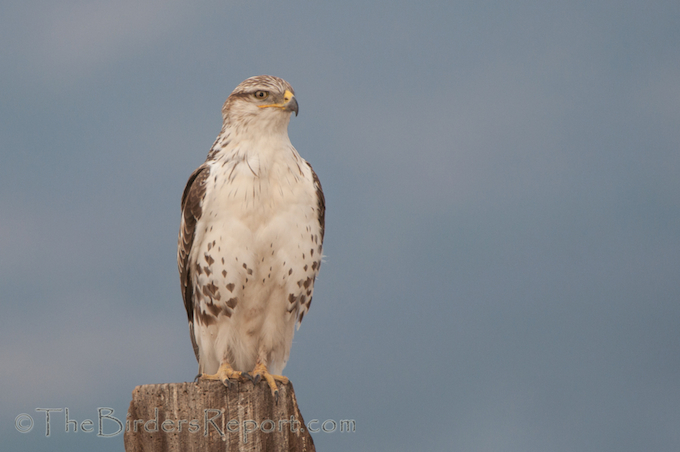
Ferruginous Hawk (Buteo regalis) Juvenile photos by Larry Jordan
Our first Christmas Bird Count will be coming up on December 14th in Fall River Mills so I thought I would take a drive up there to see what I could see as the day approaches. Rat Farm Road is a long gravel road leading from the small town of McArthur, through some sage/prairie habitat to Horr Pond and Big Lake. An excellent location to spot raptors.
I wasn’t disappointed. Besides the ever present Red-tailed Hawks, there were Rough-legged Hawk, Merlin and, my favorite, the Ferruginous Hawk. There is a long barbed wire fence that follows Rat Farm Road to its conclusion at the boat launch parking area with plenty of old wooden posts where raptors love to perch and look for prey. That’s where I spotted this juvenile hawk. Click on photos for full sized images.
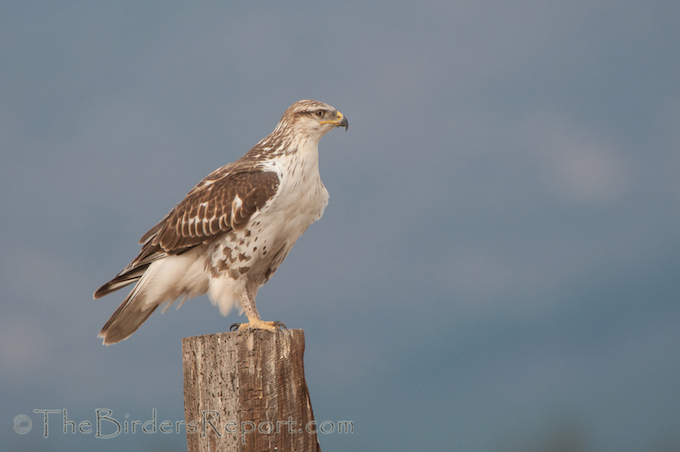
I love these juvenile raptors because they are usually not concerned too much with slowly approaching vehicles. They seem somehow not to have yet learned that humans can be dangerous.
How do I know this is a juvenile Ferruginous Hawk? This light morph juvenile still has brown tipped feathers on its thighs rather than the distinctive rufous thighs and has yet to develop the rufous shoulders of the adult.
I took several photographs of this beauty as it flew off to hunt, sometimes flying up and kiting to come down on the prey…
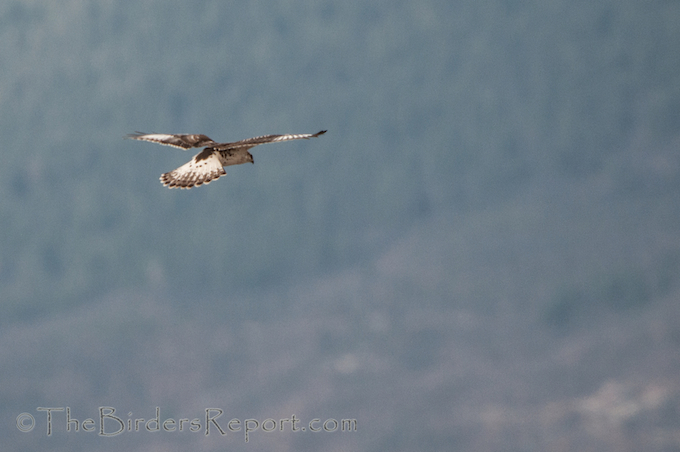
then returning back to the perch, flying low to the ground.
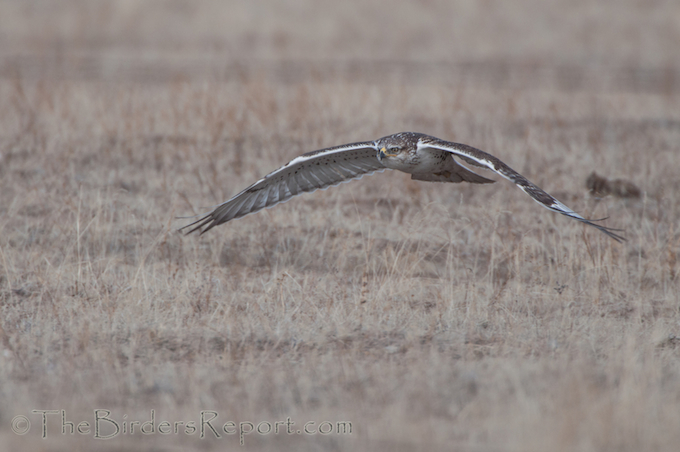
Ferruginous Hawks prey primarily on jackrabbits and cottontail rabbits as well as ground squirrels and prairie dogs. You may often find them standing in an open field near a fresh dirt mound waiting for a ground squirrel to push soil close to the surface when it will pounce on the earthen heap and pull out its prey.
This youngster didn’t find what it was looking for and flew back up to the same post and gave me the raptor stare.
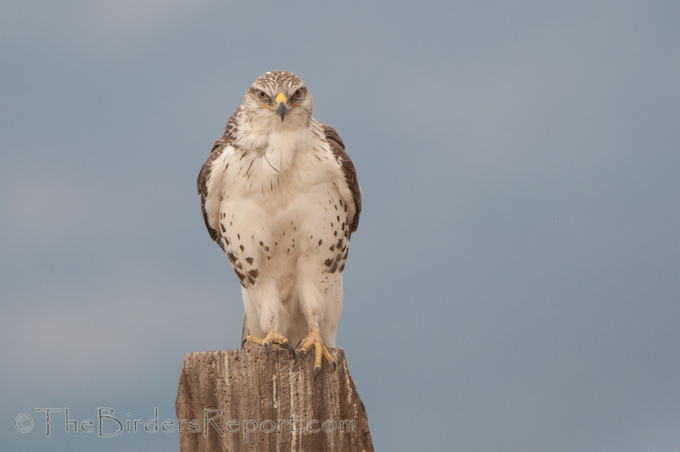
To see more cool bird photos check out Wild Bird Wednesday and The Bird D’pot.
{ }
by Larry Jordan
on November 1, 2013
This will be the fifth year for the California Audubon Bird of the Year contest which began in 2009, with the Yellow-billed Magpie (Pica nuttalli) taking the spotlight (click on photos for full sized images).
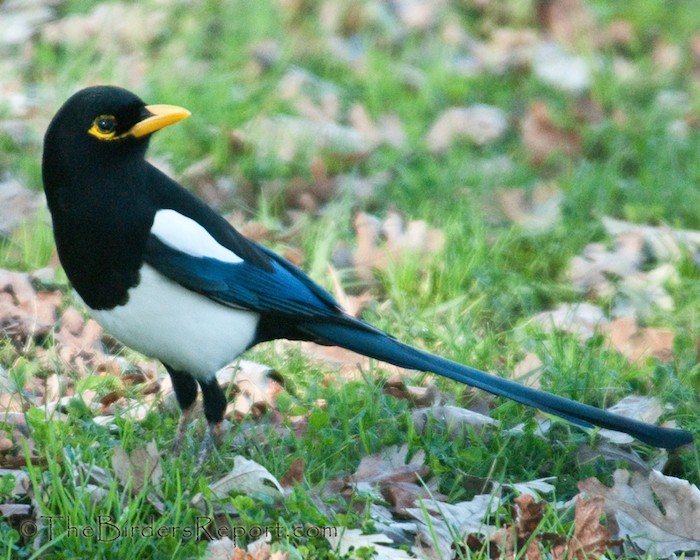
This year there are six finalists to choose from or you can write in the bird of your choice. Since the purpose of this process is to recognize a California species of conservation interest, I am personally recommending that everyone vote for the Western Burrowing Owl (Athena cunicularia)!
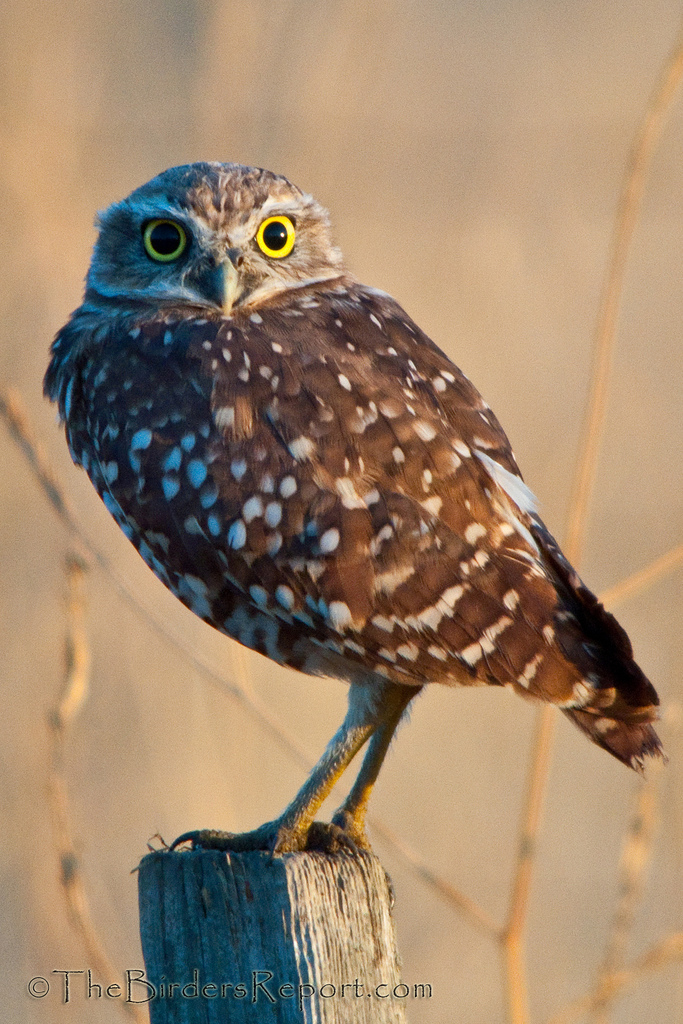
The Burrowing Owl is listed as a “Species of Special Concern” in California and their numbers have been dropping continuously for decades now. Any spotlight that we can focus on this adorable bird could be a step in the right direction for getting it some badly needed attention.
I urge you to head on over to the California Audubon Bird of the Year website and vote now and vote often for the Burrowing Owl until Friday December 6th when the voting ends. Thank you for your support!
{ }
by Larry Jordan
on October 21, 2013
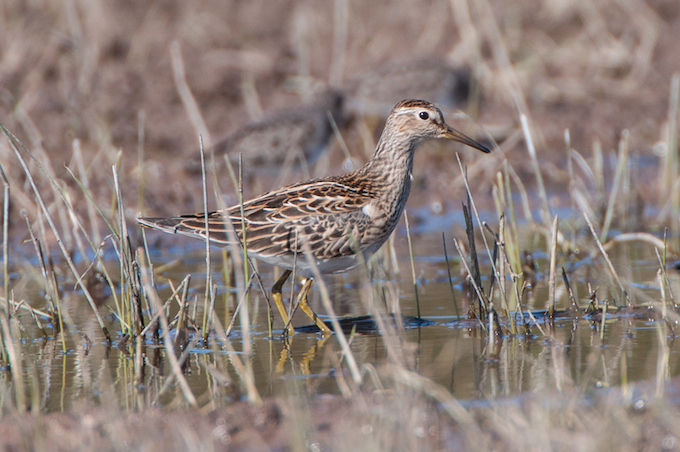
Pectoral Sandpiper (Calidris melanotos) by Larry Jordan (click on photos for full sized images)
Well it’s not unheard of but pretty rare to see Pectoral Sandpipers in Shasta County. You see the Pectoral Sandpiper is a medium-sized sandpiper that breeds on wet tundra in both the North American and Siberian Arctic and winters mostly in southern South America1. I know range maps basically show the “average” or “normal” range of species but notice that this map shows pretty much nothing west of the Rockies in the U.S.
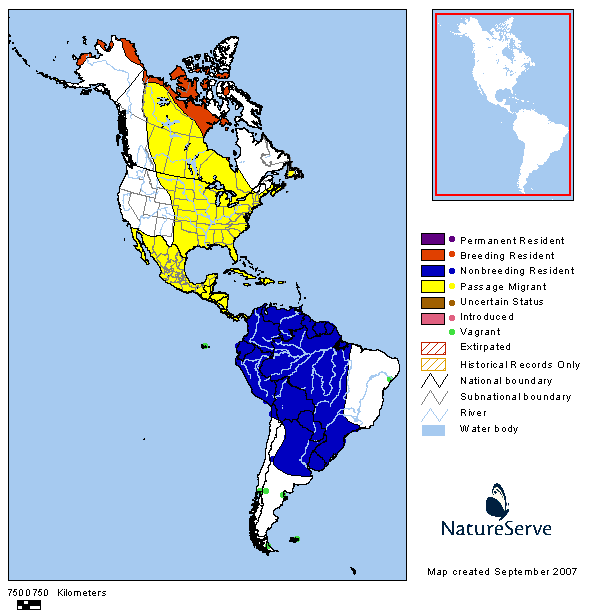
You would probably also notice that this looks like it would be a long migration from breeding grounds to wintering habitat for this bird and you would be correct. The Pectoral Sandpiper travels over 18,000 miles from its breeding grounds to its wintering habitat and back. A distance similar to that flown by the Arctic Tern.
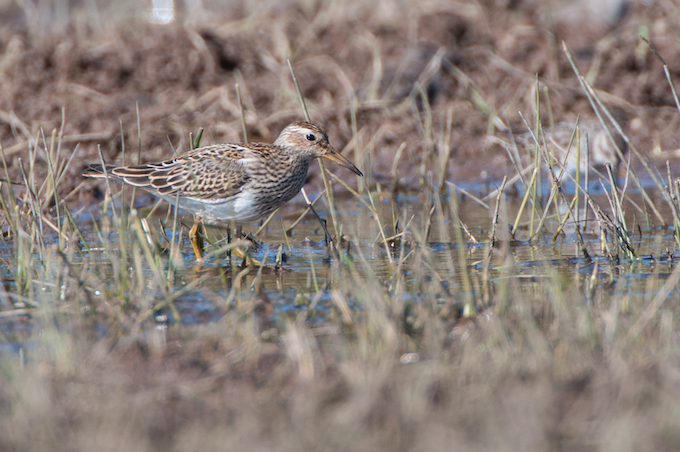
According to the local listserv, Shasta Birders, there were six of these beauties seen in a horse pasture across from Lone Tree Pond, a local known birding spot. You can find a local listserv at the American Birding Association website here.
Since this would be a life bird for me, I decided I should check it out. I found five.
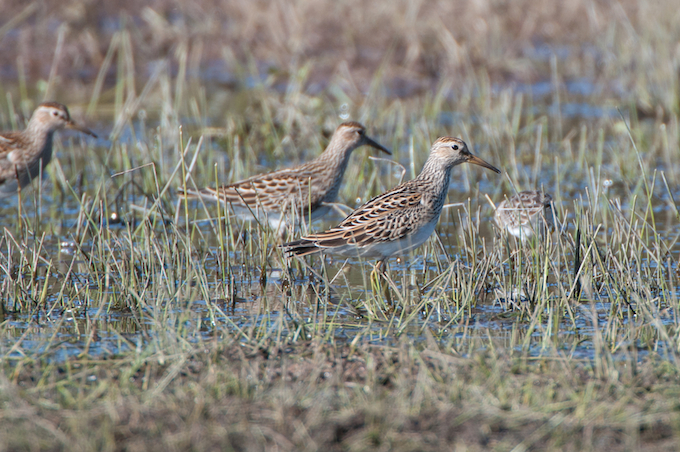
During migration Pectoral Sandpipers usually feed along edges of ponds or on algal mats away from the water’s edge, among vegetation. They are often found with other shorebirds like these much smaller Least Sandpipers (Calidris minutilla)…
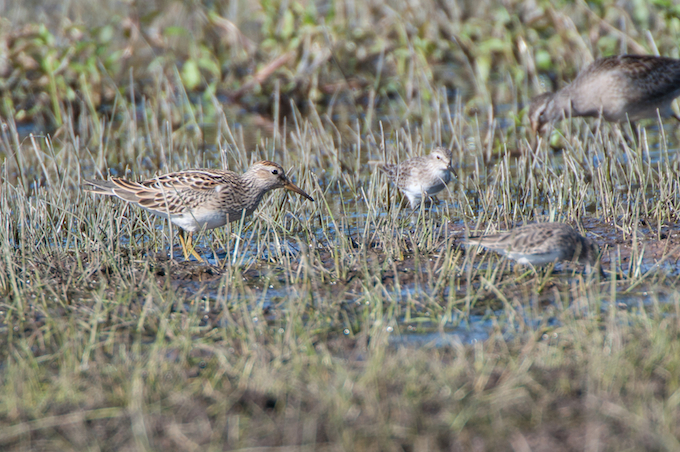
or these much larger Long-billed Dowitchers (Limnodromus scolopaceus).
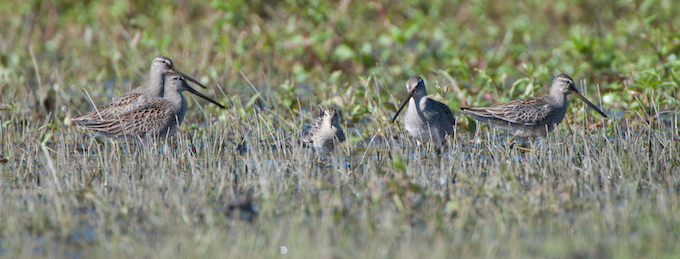
As a bonus, there were several Wilson’s Snipe (Gallinago delicata) playing hide and seek in the vegetation along the edges of the pasture.
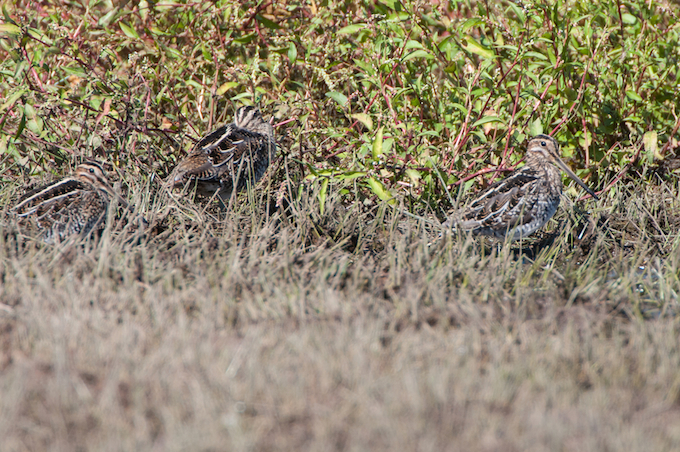
Here is a video I shot with the Pectoral Sandpipers and Least Sandpipers foraging together.
To see more great bird photos from around the world, check out The Bird D’pot and Wild Bird Wednesday!
References:1Birds of North America Online
{ }
by Larry Jordan
on October 9, 2013
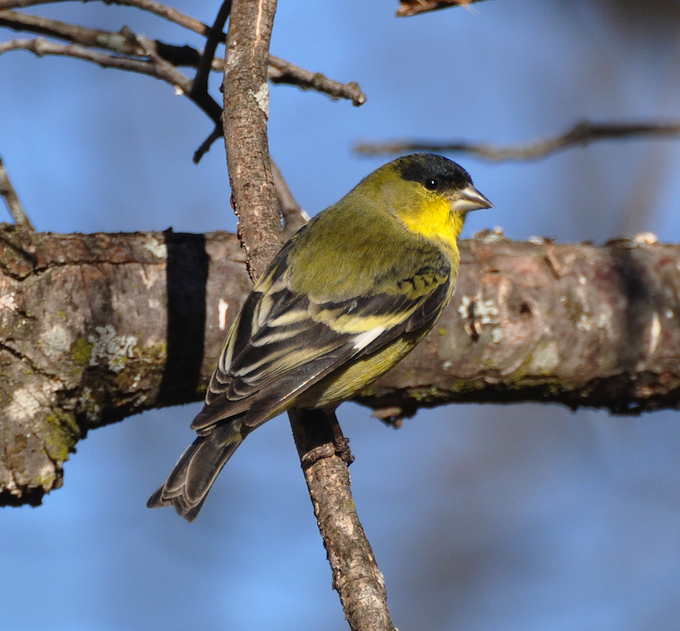
Lesser Goldfinch (Carduelis psaltria) Male photo by Larry Jordan
Please head on over to 1000 Birds and check out my latest West Coast Beat Writer post on the Lesser Goldfinch. If you want to see more great bird photos, join the fun at The Bird D’pot and Wild Bird Wednesday!
{ }



















Social Media Connect